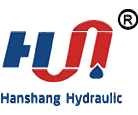A hydraulic valve is essentially just a “device with adjustable hydraulic resistance”, nothing more, no less. All hydraulic valves must be able to “adjust hydraulic resistance”, and can only do this, without exception. Starting from this essence, it is relatively easy and comprehensive to understand hydraulic valves, especially, some combination valves in construction machinery, some hydraulic valves with complex structures, in the actual hydraulic system, may have various effects under different working conditions And phenomenon.
With the development of hydraulic technology today, the type of hydraulic valve is dazzling. Different countries and even different companies in the same country have different classifications of hydraulic valves. The editor of this article makes a brief summary based on the types of common valves on the market for reference:
1. One-way valves can be divided into ordinary one-way valves and hydraulic-controlled one-way valves. The ordinary one-way valves only allow liquid flow to pass through in one direction, and the hydraulic-controlled one-way valve can also flow in reverse under the effect of pilot pressure.
2. The shuttle valve can receive liquid flow from two different sources and deliver the highest pressure to a single outlet. Shuttle valves are often used in load sensing circuits and brake oil circuits. Including ball type, seat valve type and spool valve type.
3. The overflow valve has different uses in different occasions. For example, in a quantitative pump throttling speed regulation system, the overflow valve is used to keep the pressure of the hydraulic system (that is, the outlet pressure of the hydraulic pump) constant, and overflow the excess flow of the hydraulic pump back to the tank. At this time, the overflow valve is used for constant pressure. Valve use.
4. The pressure reducing valve is a pressure control valve that uses liquid flow to flow through the gap to produce pressure loss, so that the outlet pressure is lower than the inlet pressure. According to different adjustment requirements, the pressure reducing valve can be divided into a constant pressure reducing valve, a fixed ratio reducing valve and a fixed differential reducing valve.
5. The function of the sequence valve is to use the oil pressure as a control signal to control the on and off of the oil circuit. It is named because it is used to control the sequence of actions of multiple actuators. Sequence valves are divided into direct-acting and pilot-operated types.
6. The counterbalance valve is one of the least promising products in the hydraulic industry. Many people like to complicate the choice of balance valve, and therefore refuse to make a choice.





